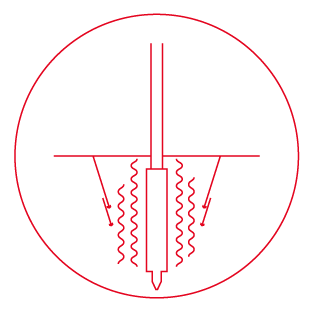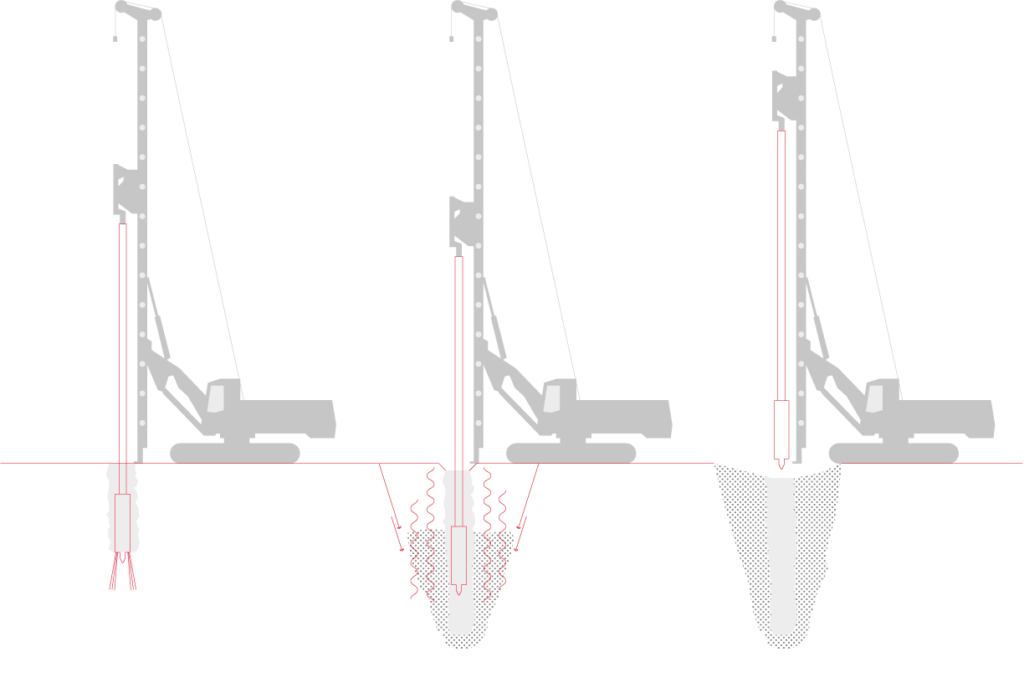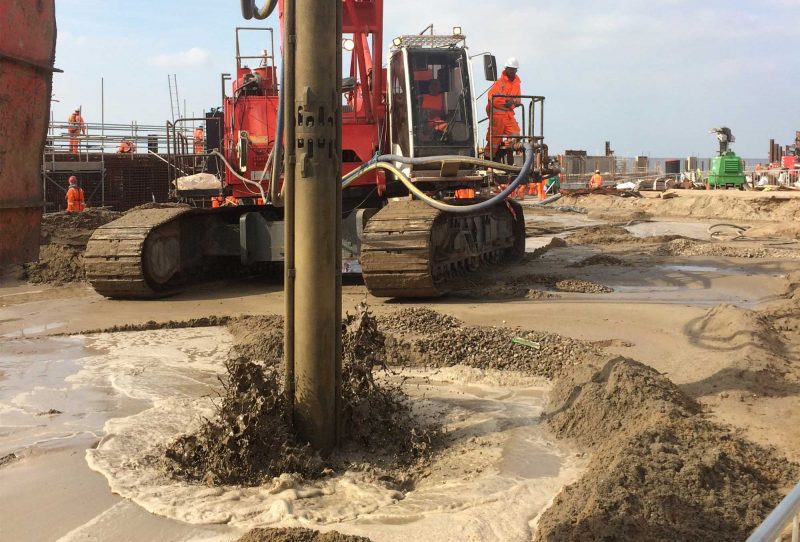Where sites are underlain by sands and gravels, we are able to use our vibrating poker technology to improve the density of these soils.
The vibrating poker generates horizontal vibrations which allows the sand and gravel particles to be rearranged into a denser configuration, by first destroying the existing fabric and then allowing them to reconfigure themselves into a denser arrangement.

Benefits
- Reduction in the risk of liquefaction in earthquake areas
- Enhanced bearing capacity
- A reduction in the total and differential settlements
- Ground bearing foundation solutions can be adopted reducing the need for reinforced foundations
- No need for imported material
- No spoil generated
Application
- Reclaimed land areas (e.g. ports) are created from dredged sands and gravels
- In seismic zones where sites are underlain by sands and gravels

Presentation and key elements
Vibrocompaction: explained
Described as a ground improvement technique, Vibrocompaction is used to control and reduce settlement, mitigate liquefaction, stabilise/treat hydraulic fill and limit lateral earth pressure behind quay walls.
Vibrocompaction fundamentals
Vibrating pokers are inserted into loose soil or fill to compact the ground at depth. The pokers, along with large volumes of water generate localised liquefaction of the soil. This method of ground improvement enables the particles to rearrange themselves in a denser formation and thus increases soil density.
Delivering Vibrocompaction solutions
The Vibrocompaction process is delivered using a rig (excavator, drilling rig or crane) and a vibrating poker. The combined weight of the equipment, pull down force, jet water and sustained horizontal vibrations allow the vibrating poker to reach the required depth. On reached, the poker is gradually lifted, repeatedly producing a large diameter compacted ground cylinder, depending upon the ground conditions and choice of poker.

